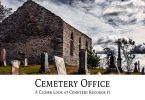Discovering the burial location of your ancestors is an important part of genealogy. Knowing where the burial location is (and visiting it, if possible) gives you a deeper insight into your family in past generations, gives you a place to go to honor your ancestor, and puts you as close to them physically as you will ever be. Often, the burial location is obvious, even if it’s not marked. There will be spaces between the headstones of other ancestors, often with indentations in the ground where the coffin underneath has collapsed over the years. Family lore may have handed down the location. It can be easy to find and often is. However, you will sometimes come across an ancestor whose burial location seems a complete mystery. This doesn’t mean you can’t find it. Here are three ways you can discover the hidden burial locations of your ancestors.
1. Look at the Death Certificate
Most death certificates list the method of disposal of the remains. If your ancestor was buried, the name of the cemetery in which they were buried will usually be included on the certificate, typically at the very bottom of it. Look over the death certificates of your ancestors. Examine them closely. You’ll usually see the burial location. Once you find it, you can either go visit it in person, or look it up on FindAGrave.com and see if there is a photo of it on the site. This is a commonly overlooked way of finding the burial location of an ancestor if you didn’t previously know where it was.
2. Check for an Obituary
If you can’t find a death certificate, such as if your ancestor died before his or her county or state started requiring the issuance of them, look in the old newspapers of the area to see if you can find an obituary. The time and place of the funeral, as well as the burial location, are often revealed in obituaries, even quite old ones. Once you have the name of the cemetery, finding the burial location is usually a simple matter.
Many old newspapers are now online, both on free and membership genealogy websites like GenealogyBank.com, Newspapers.com, and others. You can search for obituaries on those websites. If the newspapers from your ancestor’s area are not online, you can always go to the local historical society and see if they have records of old newspapers on microfilm. If you don’t live close to the historical society, you can call them and see if they will do a lookup for you. Many of them will. You can also try contacting the newspaper itself to ask where it keeps old issues and how you can search them.
3. Call the County Clerk, City Clerk, or Church that Manages the Cemeteries Where Your Ancestor is Most Likely to Be
It is often easy to make a good guess as to where your ancestor’s burial location may be. They are typically in one of the cemeteries closest to where they lived, or on the property of the church, they belonged to. Of course, there are exceptions, such as people who were buried on family farms, or in far away locations when they died while traveling, or if they wanted to be buried near relatives who didn’t live nearby. But a cemetery close by is generally your best bet as far as guesses go.
Cemeteries that are still managed by a city, county, or church usually have records as to who is buried in them and where. You can often get the exact burial location, whether it is marked or not, just by calling the entity that manages the cemetery. If you decide to go visit it, the management can give you directions to the location of the burial, or provide you with a map so you can find it on your own.
If the cemetery is a really old one and is no longer managed by any entity, you may still be able to get burial records for it by going to the local archives or historical society.
Those mystery burial locations don’t have to remain mysteries. Just use one or all of the above techniques, and you may just find that missing ancestor yet.






